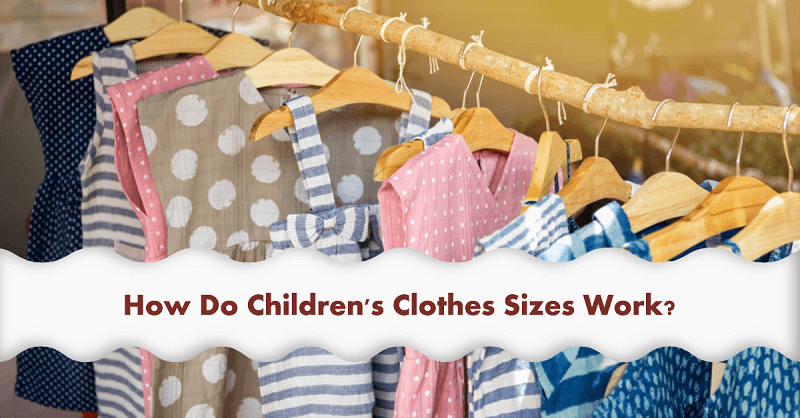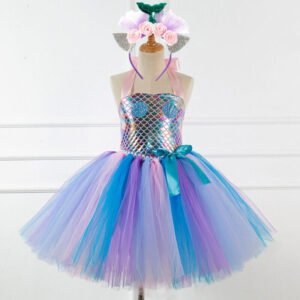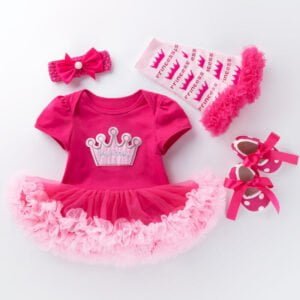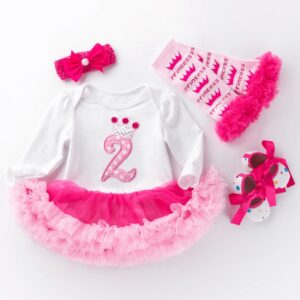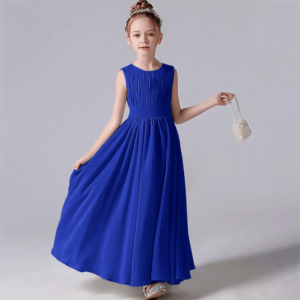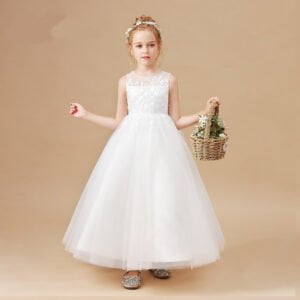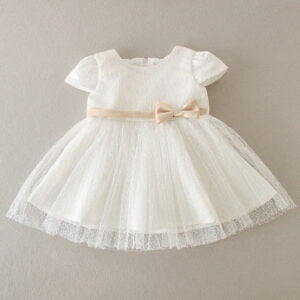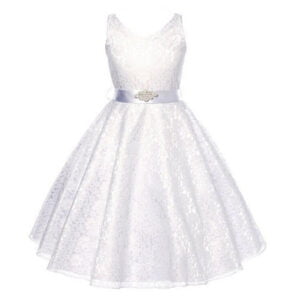Choosing the right size of children’s clothing can be a daunting task for parents. As kids grow rapidly, it can feel like their clothes are constantly being outgrown. Understanding how children’s clothes sizes work is crucial to ensure a proper fit and avoid unnecessary frustrations. In this comprehensive guide, we will dive into the world of children’s clothing sizes, providing you with the knowledge and tips you need to navigate this often-confusing aspect of parenting.
From deciphering size charts to measuring your child’s size accurately, we’ll cover it all. We’ll also explore common size variations, fit considerations, and helpful strategies for finding the perfect fit. Whether you’re shopping online or in-store, armed with this knowledge, you’ll be equipped to make informed decisions and save time and money in the process.
So, let’s unravel the mystery of children’s clothes sizes together and embark on a journey to ensure your little ones are dressed comfortably and stylishly in garments that fit them just right. Get ready to demystify children’s clothing sizes and become a savvy shopper for your kids!
On This Page
How Children’s Clothes Sizes are Determined
Children’s clothing sizes are determined through standardised sizing systems that vary across brands and countries. Two common approaches to sizing are age-based sizing and height-based sizing. Age-based sizing assigns a specific age range to each size, such as 2T (for toddlers) or 8-10 years. On the other hand, height-based sizing correlates sizes with a child’s height in inches or centimeters, such as 116 cm or 48 inches.
It’s important to note that there can be variations in sizing charts among different brands, so it’s always recommended to consult the specific brand’s size chart for accurate measurements. Additionally, baby and toddler sizes differ from children’s sizes, as they account for the different proportions and developmental stages of younger children. Understanding these nuances will help you make better-informed choices when selecting clothes for your little ones. In the next section, we’ll dive deeper into decoding children’s clothing size charts and how to interpret them effectively.
Baby Clothes Sizes
Baby clothes sizes are typically based on age. Newborns are typically sized NB (newborn), and then sizes progress up to 24 months. However, it’s important to note that these sizes are just a general guideline. Every child grows at their own rate, so it’s possible that your child may need a larger or smaller size than their age suggests.
Here is a chart that shows the different baby clothes sizes and their corresponding ages:
| Age | Size |
| Newborn | NB |
| 3 Months | 0-3 Months |
| 6 Months | 3-6 Months |
| 9 Months | 6-9 Months |
| 12 Months | 9-12 Months |
| 18 Months | 12-18 Months |
| 24 Months | 18-24 Months |
Toddler and Children’s Clothes Sizes
Once your child reaches toddler-hood, clothing sizes are typically based on height and weight. This is because children at this age vary in size more than newborns and infants. Again, it’s important to measure your child and compare their measurements to the size chart provided by the clothing brand.
Here is a chart that shows the different toddler and children’s clothes sizes and their corresponding height and weight ranges:
| Height | Weight | Size |
| 24-30 inches | 15-25 pounds | 2T |
| 30-34 inches | 25-35 pounds | 3T |
| 34-38 inches | 35-45 pounds | 4T |
| 38-42 inches | 45-55 pounds | 5T |
| 42-46 inches | 55-65 pounds | 6 |
| 46-50 inches | 65-75 pounds | 7 |
| 50-54 inches | 75-85 pounds | 8 |
| 54-58 inches | 85-95 pounds | 9 |
| 58-62 inches | 95-105 pounds | 10 |
| 62-66 inches | 105-115 pounds | 12 |
| 66-70 inches | 115-125 pounds | 14 |
Teen Clothes Sizes
Once your child reaches the age of 13 or 14, they will typically start wearing clothes that are sized according to the standard women’s or men’s sizes. These sizes are based on chest, waist, and hip measurements.
Here is a chart that shows the different teen clothes sizes and their corresponding chest, waist, and hip measurements:
| Size | Chest | Waist | Hips |
| XS | 34-36 inches | 26-28 inches | 34-36 inches |
| S | 36-38 inches | 28-30 inches | 36-38 inches |
| M | 38-40 inches | 30-32 inches | 38-40 inches |
| L | 40-42 inches | 32-34 inches | 40-42 inches |
| XL | 42-44 inches | 34-36 inches | 42-44 inches |
| XXL | 44-46 inches | 36-38 inches | 44-46 inches |
Decoding Children’s Clothing Size Charts
Size charts play a vital role in determining the appropriate clothing size for your child. They provide a reference point for measurements and help you find the best fit. Let’s break down the key components of a size chart and explore some useful tips for interpreting them accurately.
Components of a Size Chart:
Size charts typically include various measurements such as age, height, weight, chest, waist, and hip. Each measurement corresponds to a specific size or size range. It’s essential to understand which measurements are relevant for the particular garment you’re interested in, as some items may prioritise certain measurements over others (e.g., waist measurement for pants, chest measurement for tops).
Tips for Interpreting Size Charts:
- Measure Your Child: Take accurate measurements of your child’s height, chest, waist, and hip, and compare them with the size chart. This will help you determine the closest size match.
- Consider Growth: Keep in mind that children grow quickly, so it’s wise to choose a slightly larger size to allow room for growth. However, avoid sizing up excessively, as excessively loose clothing may be uncomfortable or pose safety risks.
- Check Sizing Notes: Some size charts may include additional notes or recommendations specific to the brand or garment. Pay attention to these notes as they can provide valuable insights into the brand’s fit or any unique considerations.
Variations Among Different Brands:
It’s important to note that size charts can vary significantly from one brand to another. A child who typically wears a size 4 in one brand may need a size 6 in another. Familiarise yourself with the size chart of each brand you’re interested in and be prepared to adjust accordingly. Customer reviews and feedback can also offer helpful insights into the brand’s sizing consistency and fit.
By understanding the components of size charts and employing these tips, you’ll be better equipped to find the right size for your child’s clothing. In the next section, we’ll explore the importance of measuring your child’s size accurately to ensure an optimal fit.
Measuring Your Child’s Size
Accurate measurements are key to finding the perfect fit for your child. By measuring your child’s size correctly, you can confidently select clothing that aligns with their unique proportions.
5 Steps to Measure Your Child
Here’s a step-by-step guide to help you measure your child accurately:
- Gather the necessary tools: You’ll need a flexible measuring tape, a notepad or smartphone to record measurements, and a helper if possible.
- Height Measurement: Have your child stand against a wall with their back straight and heels together. Place the measuring tape vertically against the wall, aligning it with the top of their head. Gently press the tape to ensure it’s flat against the wall and take note of the measurement at the bottom of their feet. This measurement represents their height.
- Chest Measurement: Wrap the measuring tape horizontally around the fullest part of your child’s chest, typically just under the armpits. Ensure that the tape is snug but not too tight. Record the measurement.
- Waist Measurement: Measure your child’s waist by wrapping the measuring tape around their natural waistline, which is usually the narrowest part of the torso above the belly button. Make sure the tape is comfortably snug and record the measurement.
- Hip Measurement: To measure the hips, wrap the measuring tape around the fullest part of your child’s hips, ensuring it’s parallel to the ground. Record the measurement.
Remember, accuracy is essential when measuring your child’s size. For more precise measurements, it’s recommended to take multiple measurements and use the average. Additionally, consider re-measuring periodically as children’s bodies can undergo growth spurts.
By measuring your child’s size accurately, you’ll have a reliable baseline to consult when referring to size charts and making clothing purchases. In the next section, we’ll delve into common size variations and important fit considerations to keep in mind while shopping for children’s clothes.
Common Size Variations and Fit Considerations
When it comes to children’s clothing, there can be variations in sizing and fit that parents should be aware of. Understanding these variations and considering important fit considerations will help you make informed decisions when selecting clothes for your child. Here are some key factors to keep in mind:
Slim-fit, Regular-fit, and Loose-fit Options:
Many clothing brands offer different fit options to accommodate varying body shapes and preferences. Slim-fit styles are designed for narrower frames, while regular-fit options provide a more average fit. Loose-fit styles offer a more relaxed and roomier silhouette. Consider your child’s body shape and personal comfort when choosing between these fit options.
Height-to-Width Ratio Differences:
Children come in all shapes and sizes, and it’s common to encounter height-to-width ratio differences. Some children may be taller or shorter for their age while having a more average or broader build. Pay attention to the overall proportions of your child’s body and look for brands that offer size options catering to different body types.
Size Discrepancies among Clothing Categories:
It’s worth noting that sizing variations can exist within different clothing categories. For example, a size 5 shirt from one brand may fit differently than a size 5 pair of pants from the same brand. Take into account any specific fit considerations mentioned by the brand or other customers when selecting items from different clothing categories.
By considering these common size variations and fit considerations, you can better navigate the wide range of options available in the children’s clothing market and choose garments that suit your child’s unique body type and preferences. In the next section, we’ll provide some helpful tips for finding the right fit when shopping for children’s clothes.
Helpful Tips for Finding the Right Fit
Finding the right fit for your child’s clothes goes beyond relying solely on size charts. Here are some helpful tips to ensure your little one looks and feels great in their outfits:
- Consider Growth Spurts and Room for Growth: Children grow quickly, so it’s important to choose clothes that allow room for growth. Opting for sizes slightly larger than your child’s current measurements ensures longevity and saves you from having to constantly update their wardrobe. However, avoid excessively oversized clothing that may impede movement or pose safety risks.
- Evaluate Fabric’s Stretch and Flexibility: Some fabrics have more stretch and flexibility than others, which can affect the fit and comfort of the garment. Stretchy fabrics like spandex or elastane blends offer more flexibility, allowing for a better fit and ease of movement. Consider the fabric composition and look for items that provide the desired level of stretch for your child’s activities and comfort.
- Consult Customer Reviews and Feedback: Reading customer reviews and feedback can provide valuable insights into a brand’s sizing accuracy and fit. Look for reviews from parents whose children have similar body types or proportions to your child’s. Their experiences can offer guidance on whether a particular brand or style runs true to size or tends to run larger or smaller.
- Check for Adjustable Features: Some garments feature adjustable features like adjustable waistbands, drawstrings, or straps, which allow for customization and a better fit. These adjustable elements can be particularly helpful when dealing with size variations between different parts of your child’s body, such as a narrower waist or broader shoulders.


Remember that finding the perfect fit may involve some trial and error, as each brand and style may fit differently. Don’t hesitate to exchange or return items if they don’t meet your expectations. Lastly, encourage your child’s involvement in the fitting process, as their comfort and confidence in their clothes are equally important.
By applying these helpful tips, you’ll be well on your way to selecting children’s clothing that fits your child impeccably and allows them to move and play with ease. In the next section, we’ll explore the relationship between age and clothing size, providing guidance on understanding the age range indicated on labels.
Age vs. Clothing Size: Understanding the Range
When shopping for children’s clothes, you may come across age ranges indicated on labels or size charts. It’s important to understand that these age ranges serve as general guidelines rather than strict rules. Here are some key points to consider when it comes to age and clothing size:
- Age Guidelines as a Starting Point: Age ranges provided on clothing labels can be helpful initial reference points when selecting sizes for your child. However, keep in mind that children grow at different rates, and individual body proportions can vary. Therefore, it’s crucial to rely on measurements and size charts in conjunction with age guidelines.
- Factors that May Affect Sizing: Several factors can influence the size your child wears, even within the same age group. Body shape, height, weight, and development patterns can all contribute to differences in clothing sizes. It’s essential to consider these individual factors alongside the general age guidelines to ensure the best fit.
- Adapting Clothing Sizes for Different Climates and Seasons: Keep in mind that clothing sizes can also vary based on the climate and season. Warmer weather may call for looser and breezier outfits, while colder seasons may require layering. Take into account the intended use and climate appropriateness of the clothing when selecting sizes.
Remember that clothing size labels should be used as a starting point rather than a definitive measurement. Always refer to size charts, take accurate measurements of your child, and consider their individual factors when making sizing decisions. By doing so, you can find clothes that fit your child comfortably and accommodate their unique needs.
In the next section, we’ll explore the world of international sizing standards, discussing the differences between US, UK, EU, and other regional sizing systems, and how to navigate them effectively.
Navigating International Sizing Standards
Navigating international sizing standards can be challenging, as different countries and regions may use distinct sizing systems. Understanding these differences will help you make accurate size conversions and find the right fit for your child. Here’s what you need to know:
Differences between US, UK, EU, and Other Regional Sizing Systems
The United States typically uses age-based sizing, with labels like 2T, 4T, or 6X, whereas the United Kingdom primarily relies on height-based sizing, such as 98cm or 116cm. The European Union (EU) follows a height-based system as well, using centimeters (e.g., 98cm, 104cm, etc.). Other countries may have their own unique sizing conventions, so it’s crucial to familiarize yourself with the specific system used by the brand or region you’re shopping from.
Conversion Charts and Online Tools
To navigate between different sizing standards, conversion charts and online tools can be immensely helpful. These resources provide you with the ability to convert sizes accurately. Be mindful of potential variations in size charts even within the same sizing system, as brands may still have their own interpretations of standard measurements.
Cross-Referencing Measurements
When shopping internationally, it’s advisable to cross-reference measurements in addition to relying solely on size labels. Refer to the brand’s size chart and compare it with your child’s actual measurements to ensure the best possible fit. Remember that accurate measurements are crucial regardless of the sizing system being used.
Seek Brand-Specific Guidance:
Some brands provide size conversion information on their websites or product descriptions to assist international shoppers. They may offer recommendations or size equivalencies to make the shopping process more seamless. Take advantage of these resources when available to ensure a more accurate selection.
By being aware of international sizing differences and utilising conversion tools and resources, you can navigate the world of children’s clothing sizes more effectively. Taking the time to understand the specific sizing system used by the brand or region you’re shopping from will lead to a better fit and a more enjoyable shopping experience.
In the next section, we’ll discuss strategies for online shopping and how to make the most of digital platforms when selecting children’s clothes.
6 Online Shopping Strategies for Children’s Clothes
Online shopping offers convenience and a wide range of options when it comes to children’s clothes. To make the most of your online shopping experience and ensure a successful purchase, consider the following strategies:
- Accurate Measurements: Before browsing online, take precise measurements of your child’s height, chest, waist, and hip. Refer to the brand’s size chart and compare these measurements to find the appropriate size. By knowing your child’s measurements, you can confidently select the right size without the need for physical try-ons.
- Read Product Descriptions and Reviews: Pay close attention to product descriptions and details provided by the online retailer. Look for information about fabric composition, fit, and any specific sizing recommendations. Additionally, reading customer reviews can offer valuable insights into the quality, fit, and sizing accuracy of the garment you’re considering.
- Utilise Size Filters and Advanced Search Options: Many online retailers offer size filters and advanced search options, allowing you to narrow down your options based on specific size requirements. Use these features to streamline your search and focus on the sizes that are most suitable for your child.
- Check Return and Exchange Policies: Before making a purchase, familiarise yourself with the online store’s return and exchange policies. Ensure that they offer a hassle-free return process in case the size or fit doesn’t meet your expectations. Knowing the return policy will provide peace of mind and flexibility in case adjustments are needed.
- Take Advantage of Virtual Fitting Tools: Some online retailers have virtual fitting tools or size recommendation features. These tools use algorithms and measurements to suggest the best size for your child based on their body measurements. While not foolproof, they can provide helpful guidance in selecting the right size.
- Seek Recommendations from Online Parenting Communities: Engage with online parenting communities, forums, or social media groups focused on children’s clothing. Seek recommendations and advice from other parents who have experience shopping for kids’ clothes online. They can share insights, suggest reliable online stores, and offer valuable tips for finding the perfect fit.
By implementing these strategies, you can navigate the world of online shopping for children’s clothes more effectively. Online shopping offers convenience and a vast selection, and with the right approach, you can confidently find stylish and well-fitting garments for your little ones.
Frequently Asked Questions (FAQs)
Is 3 months and 0-3 months the same?
No, 3 months and 0-3 months are not the same. “3 months” typically refers to clothing sizes designed for babies who are approximately 3 months old. On the other hand, “0-3 months” is a size range that includes newborns and infants up to 3 months old. It allows for a bit of flexibility in sizing to accommodate different growth rates.
What size is 110 in children’s clothes?
Size 110 in children’s clothes usually corresponds to the height measurement of approximately 110 centimeters. However, it’s important to note that sizing can vary between brands and countries, so it’s always best to refer to the specific brand’s size chart for accurate measurements and size recommendations.
What are kids sizes in UK?
In the United Kingdom, children’s clothing sizes are typically based on the child’s height in centimeters. Common UK children’s sizes include 2-3 years, 3-4 years, 4-5 years, and so on. It’s advisable to consult the specific brand’s size chart for more precise measurements and size options.
Is size 3-6 months the same as 6 months?
Size 3-6 months and 6 months are not necessarily the same. Size 3-6 months is a range that generally fits babies between 3 and 6 months old. However, “6 months” refers to clothing specifically designed for babies at the 6-month mark. It’s always recommended to refer to the brand’s size chart and consider your child’s measurements for the most accurate fit.
What size is 3 to 6 months?
Size 3 to 6 months is a clothing size range designed to fit babies who are between 3 and 6 months old. However, it’s important to remember that sizing can vary between brands, so it’s best to refer to the specific brand’s size chart for accurate measurements and size recommendations.
How do kids sizes go in order?
Kids sizes typically go in order based on age and height measurements. Common size ranges include newborn, 0-3 months, 3-6 months, 6-9 months, 9-12 months, and then progress in yearly increments (e.g., 12-18 months, 18-24 months, 2T, 3T, 4T, and so on). However, each brand may have its own specific size increments, so it’s important to refer to their size chart for accurate sizing information.
What is the difference between 0-3 and newborn?
The difference between 0-3 months and newborn sizes lies in their intended age range. “Newborn” typically refers to clothing designed for babies from birth to around 1 month old. On the other hand, “0-3 months” is a size range that includes newborns as well as infants up to 3 months old. This range allows for a bit of flexibility in sizing to accommodate different growth rates.
How do baby and toddler clothes sizes work?
Baby and toddler clothes sizes generally correlate with the child’s age or height. For babies, sizes are often labeled in months (e.g., 0-3 months, 3-6 months) and then transition to toddler sizes, which are typically labeled with a “T” (e.g., 2T, 3T, 4T). Toddler sizes may also be categorized by age ranges (e.g., 2-3 years, 3-4 years) or height measurements. It’s important to refer to the specific brand’s size chart for accurate sizing information.
What age is size 110 in UK?
In the UK, size 110 generally corresponds to children who are around 4-5 years old. However, it’s important to note that sizing can vary between brands, so it’s always best to consult the specific brand’s size chart for accurate measurements and size recommendations.
Understanding how children’s clothes sizes work is essential for parents seeking to provide their children with comfortable and well-fitting garments. By decoding size charts, measuring accurately, considering fit variations, and utilising online resources, you can successfully navigate the world of children’s clothing sizes. Remember, finding the right fit is a journey that may involve trial and error, but armed with knowledge and these strategies, you’ll be well-equipped to make informed decisions and ensure your child looks and feels their best in their clothes. Happy shopping!

